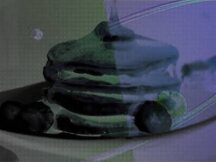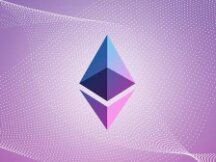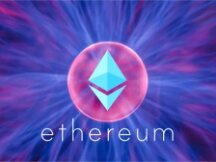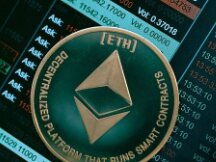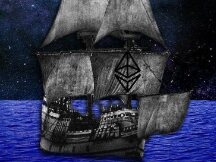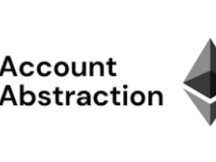A broad understanding of the Phase 2 ecosystem: concepts, development plans and key functions

According to new data from Footprint Analytics, the total Ethereum Layer 2 volume (or TVL) in the fourth quarter increased from the third quarter.600%, against 7.17 billion dollars on November 25. So far, TVL No. 1 is Arbitrum ($ 2.4 billion), dYdX ($ 980 million) and Boba Network ($ 770 million) is third.

Footprint analysis: Series 2 TVL

Footprint analysis: shared TVL from phase 2 protocol
As the number of users of the Ethereum network increases, network congestion and high fuel costs have become a major problem for many applications, and the market demand for the Ethereum network has increased, and this problem has become The most important. On October 26, the creator of Ethereum V God announced at the "Road to Ethereum in Layer 2" conference, which means Layer 2 is the future of Ethereum scaling.
01
Set of 2 concepts
In the face of increasing data and network congestion, the concept of Layers has always been caused by expanding capital and easing current pressures.Layer 2 is a complete solution to improve the performance of the Ethereum network (Layer 1).
Blockchain development is generally divided into two sections: Layer 1 and Layer 2.
- Layer 1: Improve the public channel itself to improve performance, for example on the extension channel;Solutions that can improve market capacity, including increasing sizes (or file formats), process sharing and proof separation
- Layer 2: Create a second layer under the chain (for example, layer 2) without changing the size of layer 1 (keychain) and other rules.Some operations, including state channels, side chains, plasmas, and stacks, were performed in a second layer to reflect backbone pressure and interact with the backbone when needed. In other words, it is an off-chain extension.
What is the relationship between Layer 1 and Layer 2?Like the parent-partner relationship, some data transfer requests to Ethereum are chained to Layer 2 for processing. When complete, Layer 2 sends the crossover data back to Layer 1, reducing pressure changes. Due to the lower market value cost of Layer 1, this is the primary focus of Layer 2.
In addition, in the continuity of Layer 1, Layer 2 goes beyond the limits of the old functions of Layer 1 and secures Ethereum without affecting the functionality of Layer 1 itself. .
02
Key Scaling Solutions for Layer 2
Initially, Series 2 was explored in two main areas: state channels and sidechains, but during research it turned out that state channels did not meet the privacy policy requirements of decentralization and anonymity. and property management rules. The side chain is off chain. , this is not the best Layer 2 solution due to the high risk hidden in the security asset.
A good solution is to maintain data security, business reliability and anonymity, as well as a short cycle time, and Layer 2 uses these features to further improve its performance.

Footprint Analysis: Layer 2 TVL Network Growth Rate
According to Footprint Analytics, there are currently 19 sites in Layer 2, including DEX mode and other networks, which are still the most important for encryption. From the start of the year to date, total TVL has increased by 1,400.0%. The Layer 2 scaling machine tuning process is directly related and there are currently four measurement methods: Plasma, Optimistic Rollup, ZK Rollup and Validium.

Footprint analysis: phase 2 TVL protocol (last day)
1. Plasma is also safe for the assets and materials contained within the enclosure.
Plasma is an off-chain solution that relies on the commercialization of chains with minimal keychain interaction., warns the chain (Ethereum) to use extensions to increase exchange rates (the number of requests processed by the system at a given time).
Plasma was one of the first Ethereum scale-up projects for which the OMGX network developed the concept of Layer 2.It works like this:
- First, create a plasma chain outside of Ethereum. Users transfer assets from Ethereum to the plasma chain, this process requires that the key chains be sent to a smart contract that controls the plasma chain, and the assets are transferred to the chains. For interference, you can access the plasma channel. ;
- Occasionally, the plasma chain operator (ie the plasma chain operator) at this time manufactures commercial products to build the blocks.
- Plasma chain operator returns the value counted in the key chain and sends the traded assets to the current owner of the assets.
The breakthrough of the Plasma chain scaling solution is that it ensures the relative safety of the assets, even when there is no exit from the chain, the exchange rate can be deducted from the gate - keys, which can further improve the keychain. It also shrinks the important supply chain through an intermittent drop in oil prices.
However, the plasma mechanism is far from perfect and the problem is more obvious.
- No file.The keychain cannot get all the output data, it can only be identified by the root hash (a binary tree pattern that contains the root node, middle layer of nodes, and leaf layer).
- Long vacationThe lack of data available on the keychain makes the removal process take longer and requires more time for evidence of fraud, resulting in a longer removal time, which can take up to 7 minutes. -14 days.
- Versatility is difficult to delay.The interpretation of the data structure of substrings in the technical framework makes it more difficult.
Workflow: OMG Network uses the Plasma expansion plan.
According to Footprint Analytics, OMG Network is currently $ 3.1 million, ranking 14th in Level 2 operations, which is small compared to other operations.
However, with the constant emergence of new solutions like Optimistic Rollup in the Layer 2 network, the leadership of the OMG network has gradually weakened and it will return to the battlefield by improving its brand and using the solution of OMG. Optimistic Rollup extension for further improvements. opportunity. .
The Optimistic Rollup (Fraud Proof) and ZK Rollup (Zero Knowledge Proof) rooted solutions of Plasma data cannot be used to validate the package.
2. Optimistic Rollup compresses the swap data in a chain, but performance analysis is limited.
Bullish rollup is a combination of bullish contracts and on-chain data available, trusting the authenticity of the transaction package sent by the trader and punishing fraud.
The principle of his work is that when the Layer 2 results are returned to Process 1, if the examiner believes that the result may be false, the witness can issue the tender, freeze the holdings of the keychain. and identify the exchange. data and information. A company that proves it to be true is also a fraud. In addition, if the assessor has no doubts about the result of the count, the key fob in the exchange is real.
These designs improve chain efficiency, encapsulate multiple processes, save time and fuel, increase energy efficiency, reduce manufacturer downtime, and better solve the problem of Ethereum network congestion.
The disadvantages include:
- Low efficiency rating. According to the analysis of fraudulent evidence, once the assets have been placed and shipped, they have to wait a long time for information.
- The money will be frozen. It is easy for validators to freeze keychain assets if they determine that the results were fraudulent.
- Expansion level unlike ZK rollup. Compression of transactions is minimal.
Best Practices: Arbitration, Multifunctional Use of Boba Network's Optimistic Rollup Scaling Plan
According to Footprint Analytics, the Arbitrum chain is now the leader in Layer 2 and the Boba network is a new network that has grown rapidly in recent months. They use the best cumulative scaling solutions to achieve high performance, allowing manufacturers to operate and operate smart contracts at low cost while maintaining unreliable security.
3. ZK stacks are widely distributed and difficult to install.
ZK Rollup improves scalability by centralizing the exchange of large sums of money in one operation. Plasma creates markets whenever a currency swap occurs, while ZK-Rollups bundles hundreds of bonds into one swap.
Compared with the best rollup, ZK rollup has higher compression performance. It is used to verify the authenticity of the package by zero-knowledge evidence, and the operator can assure the customer that the specific assurance is true. No important information is provided to the user.Special activities include:
- Users swap and close assets, layer 2 adds asset data.
- In an integrated system, users sign and submit changes.
- The operator completes the batch operation and creates zero-knowledge certificates.
- The operator announces the package and the proof of zero knowledge for the key ring.
- Smart contracts identify the authenticity of package transactions from scratch, change tariffs and perform exchange transactions.
The advantages include:
- Achievement of decentralization
- High chain efficiency. higher compression ratio;
- High performance evaluation. No waiting time for details.
- Better security and confidentiality. Zero-proofing has yet to disclose the details of the operation, and ZK rollup technology ensures that the data sent to the keychain is accurate and valid.
The disadvantages include:
- The process of creating zero-knowledge certifications is complicated.
- Improvements in app customization are difficult and compatibility is low.
Flagship project: dYdX adopts the ZK Rollup technological solution
dYdX establishes a strong and professional exchange for the cryptocurrency market, allowing users to have their real trading experience and ultimately the exchange itself.

Footprint analysis: dYdX TVL

Footprint analysis: DYDX token price
As a leader in DeFi derivatives, it was also one of the early consumers of ZK Rollup technology. All performance data: TVL has been up since August, stabilizing the top two for second level operations. Currently, TVL is US $ 9.76 million and the price of the token (DYDX) is falling. It is currently US $ 9.04 million and has a market value of US $ 9.04 million and US $ 570 million.
4. Validium is a low security hybrid scaling solution.
Validium is a hybrid scaling solution that allows users to choose between ZK stacking mode and Validium mode. However, unlike ZK Rollup, Validium data is stored off-chain, while data in ZK Rollup is on-chain.
Validium may be suitable for applications that do not require reliability, such as game DApps, while ZK Rollup is suitable for applications such as payments and trading with high security.
Main characteristics: DeversiFi and ImmutableX adopt Validium technological solutions

Footprint analysis: DeversiFi TVL and ImmutableX TVL
DeversiFi is undoubtedly the easiest way to access DeFi via Ethereum: Invest, trade and trade tokens for free. According to Footprint Analytics, currently the largest decentralized exchange based on Validium traded with TVL over 100 million on December 4. better information.
ImmutableX, NFT's first Phase 2 on Ethereum, promises to bring lower fuel costs and faster conversions to the game, app, and industry. Now ranked 7th in Layer 2
concludes
After many years of modification and innovation, the Layer2 scaling solution has become a safe solution for scaling Ethereum, alleviating the problem of Ethereum network congestion and gas flows. high, and has become a mainstream technology solution for the large-scale application of blockchain technology. Solutions have their pros and cons, but each Layer 2 process improves its skills based on its own content to get the most value out of it.
The technological development and rapid development of Layer 2 are also supporting the market transformation of DeFi, NFT and the virtual world. Operation and reduction costs, this is a symbol for the future of the Aether of the Phase 2 expansion workshop.

Scan QR code with WeChat
